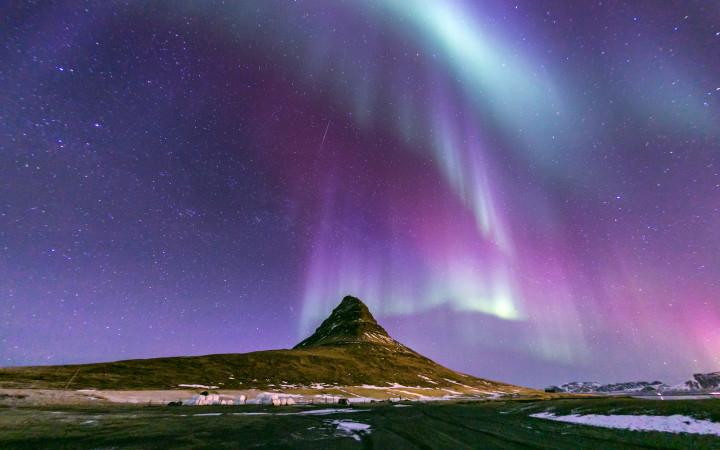Today’s Wonder of the Day was inspired by Fluffball. Fluffball Wonders, “Why is Iceland green and Greenland icy?” Thanks for WONDERing with us, Fluffball!
Do you ever WONDER how things get their names? Some names make sense. Anyone can see why we call an eight-legged sea creature an OCTOpus. However, other names make less sense. One that many people question is Iceland. Why is it called Iceland, when the island is actually quite green? On that note, what about Greenland? Isn’t most of that country covered in ice?
Some people might think we just got the two names confused. After all, the islands are close to each other! However, that isn’t the case. The Vikings named both places. Normally, the Vikings named things as they saw them. For instance, when Leif Erikson landed in Canada, the first thing he saw was grapes growing on a vine. Looking at the vine, he named the land “Vinland.” So how did they come up with the names for Iceland and Greenland?
In 850 CE, Naddador was the first Viking to land in Iceland. It was snowing when he got there, so he named the island “Snow Land.” Later, Flóki Vilgerðarson traveled to the island. On the way there, he lost his daughter. Shortly after reaching the island, all of his livestock died. Sad and unsure what to do, the Viking climbed a mountain to think. From the top, he saw a bay full of icebergs. That’s when he renamed the island “Iceland.”
The icebergs Vilgerðarson saw weren’t common in Iceland. Today, many people think they probably floated over from Greenland. Still, the name “Iceland” stuck. Years later, Iceland was home to many Vikings. Erik the Red was one of the people who lived there. After a bloody feud, they banished Erik the Red from Iceland. He left the island and sailed west.
In 985 CE, Erik the Red landed in the southwest of Greenland — one of the few regions that weren’t covered in ice. In fact, the area still holds thriving farms today. Seeing all the green plant life, Erik the Red named his new home “Greenland.” Erik also chose the name in hopes that it would make more people want to move there.
Small settlements did develop in Greenland. However, the Vikings in Greenland didn’t know they were living during the Medieval Warm Period. This was a time of warm climate in the Northern Atlantic that wouldn’t last. Around the year 1257 CE, a volcanic eruption in Indonesia set off a “Little Ice Age.” It made temperatures colder in both Greenland and Iceland.
The change in Greenland was much more extreme than in Iceland. The island became colder each year. The Vikings tried to adjust to the new climate. However, the new temperatures made food rare and seafaring risky. Eventually, no Vikings remained in Greenland. Most of the island was covered in a sheet of ice.
Today, the climate is changing again. Greenland’s ice sheet is now melting! And, believe it or not, the ice melting in Greenland is making Iceland colder. In fact, experts predict that if this continues, the two islands may one day live up to their names. In a few hundred years, Greenland may be green and Iceland may be icy.
How is this possible? The melting ice is making the North Atlantic Ocean colder. This cold slows the Gulf Stream, which is an ocean current that brings warm water from the Gulf of Mexico all the way up to Iceland. With the stream slowing, warm water will not reach Iceland, and the island will begin to cool.
We WONDER where other countries got their names! Where did “America” come from? What about “Brazil” or “Canada”? Does each country’s name have a story like Greenland and Iceland? What do you think?
Standards: ELA.RH.2, ELA.RH.10, CCRA.R.1, CCRA.R.2, CCRA.R.3, CCRA.R.10, CCRA.W.1, CCRA.W.7, CCRA.W.9, CCRA.SL.1




